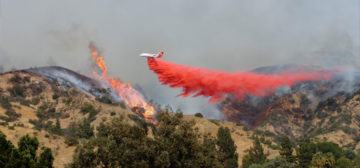by Mark Harvey

On the morning of July 22, 2016, an illegal campfire in Garrapata State Park near Carmel, California got out of control. Within a day, the fire grew to 2,000 acres. Within two days the fire grew to 10,000 acres. A month later the fire was at 90,000 acres and still largely uncontained. Ultimately the Forest Service and other agencies deployed thousands of firefighters and spent close to $260 million in an effort to contain it. The fire was finally “contained” three months later in October. During the three months of the fire’s life, bulldozers cut close to 60 miles of roads/firebreaks and aerial tankers dumped about 3.5 million gallons of fire retardant on the flames. The bulldozing and the aerial retardant work had little effect and what really helped put the fire out was October’s cooler temperatures and more humid air.
The fact of the matter is most wildfires go out by themselves.
The effort to fight large wildfires with expensive planes, helicopters, fire retardant, and bulldozers has been likened to fighting hurricanes or earthquakes: it’s costly and mostly futile. While developing fire-resistant lines and fireproofing buildings at the urban-forest interface can be very effective, trying to control massive blazes of tens of thousands of acres is like burning money.
Fighting wildfires is big business. When you stage thousands of firefighters in camps, you need catering services, laundry services, mobile housing, heavy equipment, and fuel. Caterers can gross millions of dollars to support large crews and local landowners make thousands of dollars renting their land and facilities for staging areas. Read more »
